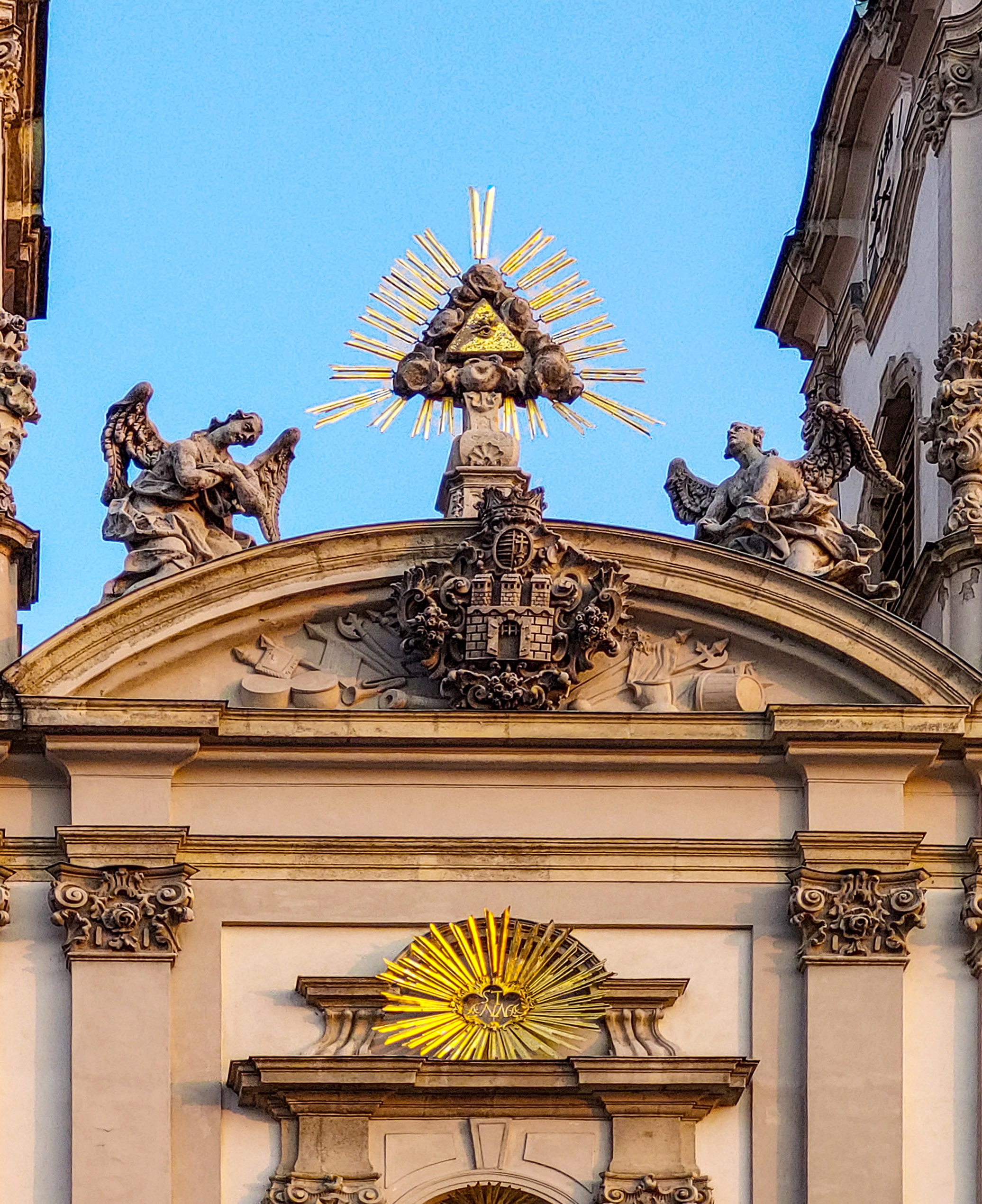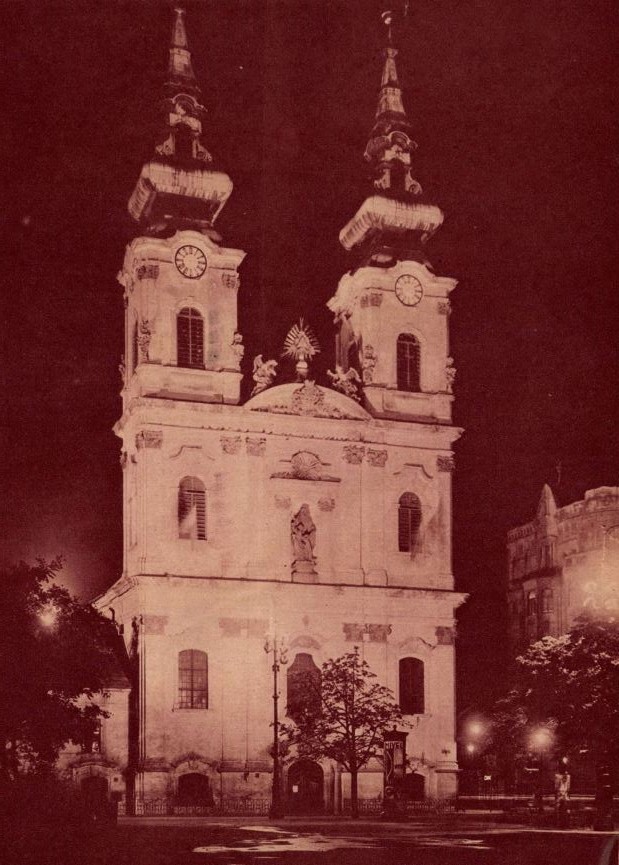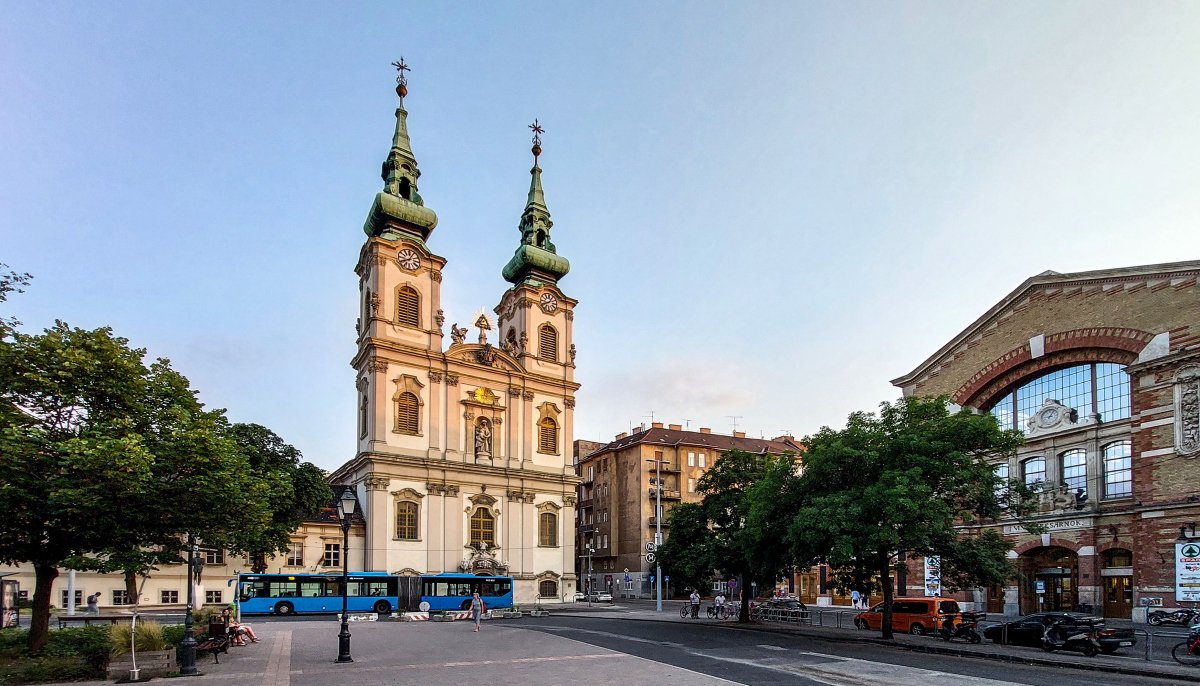The special taste and atmosphere of the Baroque art of Buda and Pest are a few of the less mentioned values of our capital. However, if we compare the buildings and churches of Budapest from this age with the other Baroque memories of the country, we can see that in these not-so-easy times for Buda and Pest, the artists managed to create something unique, not found elsewhere in this form. One of the most significant monuments of this era is The Saint Anne Parish Church of Upper Watertown, the sanctuary of which was consecrated on 21 July 1746, 275 years ago.
The Saint Anne Parish Church of Upper Watertown on the engraving of Carl Vasquez, made in 1837 (Source: FSZEK Budapest Collection)
The first church of the ancient Watertown parish, founded in 1390, was destroyed by the Turks in 1540. The parish was re-established in 1687 after the expulsion of the Turks. The pastoral care of the Watertown was then performed by the Capuchin Order, and the parish duties were performed by Tamás Raspani, a priest of Dalmatian origin. But the district did not have a parish church, the Capuchin chapel was used for the ceremonies. Raspani, who was a secular priest and died in 1718, in his will offered his property, house and chattels for a church to be built in honour of Saint Anne. St. Anne, the mother of the Virgin Mary, was a popular saint of the Baroque era. Also in 1718, the Capuchins were replaced by the Jesuit Order, and Archbishop Ágost Keresztély entrusted them with the care of the area.
The central element of the facade of the church is the statue of St. Anne, the work of the sculptor Antal Eberhardt (Photo: Balázs Both/pestbuda.hu)
In a treaty with the Jesuits in 1723, the city council undertook to erect a church and a parish building for Watertown. To this end, a reception building in the southern part of Felsővásár Square, today's Batthyány Square, was soon purchased and, under the leadership of master mason Henrik Ferenc Fiedler, it was transformed into a parish church, for which a bell tower was also built. Thus, in the year following the agreement between the city and the Jesuits, in 1724, the order could begin operating in this St. Anne's Chapel.
This chapel soon became scarce with the increasing population of the district, and although the intention was to build a larger church, it was hindered by several factors. First, the acquisition of the plot next to the chapel, which was necessary for the construction, encountered obstacles, because the owner, Mihály Pösenbacher, was not inclined to agree. But soon a more serious obstacle arose: the plague that broke out in 1738. Thus, the city council decided on the construction of the church only in January 1740, for which Archbishop Imre Esterházy of Esztergom had given permission shortly before.
The foundation stone of the church was laid on 26 July 1740, on the Feast of St. Anne. The plans for the building were selected from the twenty blueprints brought by the merchant Péter Antal Locatelli from Italy. The construction was led by master mason Kristóf Hamon and foreman-builder János Seyfferth. Five years later, on 25 November 1745, the keystone of the sanctuary dome was laid, and the following year, on 21 July 1746, the sanctuary of the church was consecrated. The first mass was presented five days later, on 26 July, the patronal festival day of the church, the Feast of St. Anne.
The sanctuary of the Saint Anne Parish Church of Upper Watertown with the main altar (Photo: The website of the Saint Anne Parish Church of Upper Watertown)
From then until the completion of the entire building, the sanctuary was used as a church. Together with the sanctuary, the Loretto chapel of the church was built between 1740 and 1746, the beautiful wrought-iron lattice of which was made by Ignác Pügl in 1752.
Along with the sanctuary, the church's Loretto chapel was also built, the wrought-iron lattice of which was made by Ignác Pügl in 1752 (Photo: The website of the Saint Anne Parish Church of Upper Watertown)
After the handover of the sanctuary, the construction of the church continued, although due to the death of Kristóf Hamon, the leader of the construction, in 1748, it was continued by the master-builder Máté Nöpauer. The masonry of the main facade and the two towers was completed by 1758, and then in November 1759, after the completion of the inner frame of the spires, the crosses were also erected on the two church towers. The masonry of the nave's dome was completed in November 1762.
Soon there were unexpected difficulties again: in June 1763, an earthquake damaged the almost finished church. The damage of the earthquake was repaired by János Hamon, the son of Kristóf Hamon, who started building the church. The decoration of the facade was soon completed and in 1765, five new additional side altars were erected. The walls of the church were decorated with paintings made in the workshop of Ferenc Wagenschön, and on the new main altar, built at the expense of Count Miklós Zichy's wife, a group of statues by Károly Bebó, completed in 1773 was placed.
It coincided with the construction of the church when on 21 September 1773, Maria Theresa promulgated the 21 July papal edict ordering the dissolution of the Jesuit order. From then on, the parish was led by secular priests appointed by the city council. After Joseph II also dissolved the Carmelite order in 1784, the organ of the Carmelite church in Buda Castle was placed in the church of St. Anne.
On 4 August 1805, Márton Görgey, the deputy general of the diocese of Esztergom, and the honorary bishop, consecrated the completed church.
After reviewing the history of construction, we also need to talk about the church building itself. All the more so because in terms of its interior, with its octagonal centre it represents a church-type that is rare in Hungary, but completely unique in Budapest.

Between the two towers, at the top of the main facade, the symbol of the eye of God can be seen (Photo: Balázs Both/pestbuda.hu)
Between the two towers, at the top of the main facade, the symbol of the eye of God can be seen with two angels worshipping on the two sides. Below this, the coat of arms of the city of Buda can be seen. The central figure of the facade is the monumental statue of St. Anne, which is located in a statue booth. The work of the sculptor Antal Eberhardt depicts St. Anne teaching the child Mary from a book.

St. Anne's Church received floodlight as early as 1930 (Photo: Pesti Napló Picture Supplement, 24 August 1930)
The three-parted facade of the church suggests a classic, longitudinally arranged interior, but the interior of the church can be said to be more central with the said octagonal centre space, above which an oval dome overturns. The people of the lively scene of the main altar by Károly Bebó are St. Anne, the child Mary, Elizabeth and Zechariah (parents of St. John the Baptist) and King David, who evokes the Old Testament, in addition to the figures depicting the dawn of the New Testament.
The Holy Trinity fresco in the sanctuary of St. Anne's Church was created by Gergely Vogl, who lived between 1717 and 1782 (Source: FSZEK Budapest Collection)
The main altar, side altars, ornaments and paintings adorning the walls of the church are masterpieces of Hungarian Baroque art. The Holy Trinity fresco in the sanctuary of St. Anne's Church was created by Gergely Vogl, who lived between 1717 and 1782, but the Blessed Sacrament fresco in the dome is a modern work, by Béla Kontuly and Pál Molnár C. painted it.
Cover photo: The Saint Anne Parish Church of Upper Watertown today (Photo: Balázs Both/pestbuda.hu)




































Hozzászólások
Log in or register to comment!
Login Registration